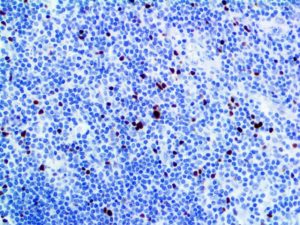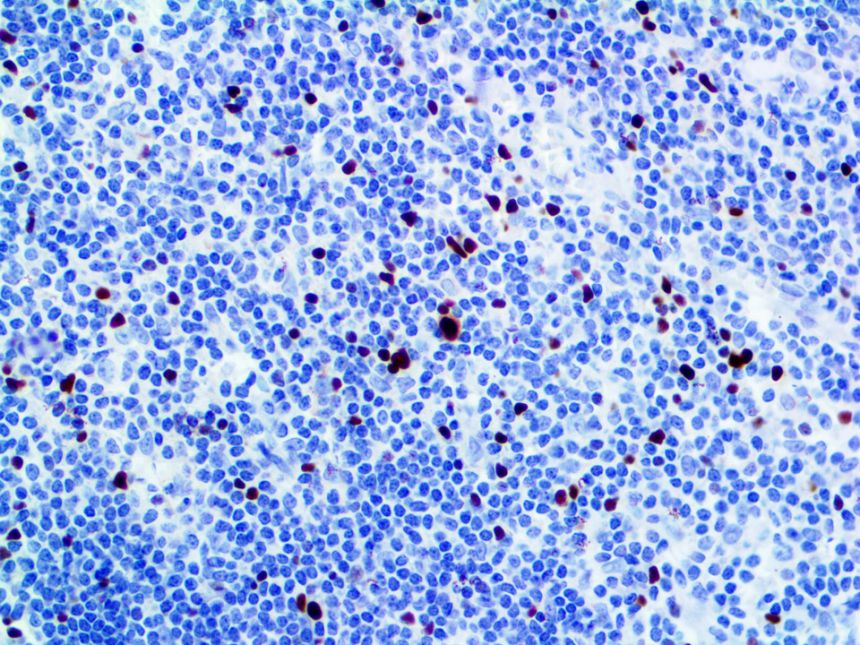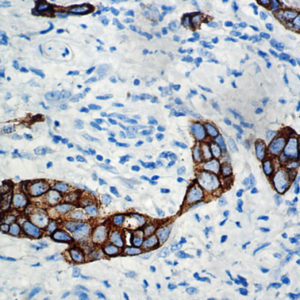
IHC of FOXP3 on an FFPE Tonsil Tissue
| Intended Use | For In Vitro Diagnostic Use | |||||||||||||||||||||||||||||||||||
| Summary and Explanation | FOXP3, also known as scurfin, is a protein involved in immune system responses. A member of the forkhead box protein family, FOXP3 appears to function as a transcription factor in the development and function of regulatory T cells. In regulatory T cell model systems, the FOXP3 transcription factor occupies the promoters of many important for regulatory T-cell function, and may repress transcription of key genes following stimulation of T cell receptors. Alterations in numbers of regulatory T-cells — in particular those that express FOXP3 — are found in a number of disease states. Patients with tumors have a local relative excess of FOXP3 positive T cells which inhibits the body’s ability to suppress the formation of cancerous cells. | |||||||||||||||||||||||||||||||||||
| Antibody Type | Rabbit Polyclonal | Clone | Polyclonal | |||||||||||||||||||||||||||||||||
| Isotype | IgG | Reactivity | Paraffin, Frozen | |||||||||||||||||||||||||||||||||
| Localization | Nuclear | Control | Colon, Tonsil, Lymph Node | |||||||||||||||||||||||||||||||||
| Presentation | FOXP3 is a rabbit polyclonal antibody derived from cell culture supernatant that is concentrated, dialyzed, filter sterilized and diluted in buffer pH 7.5, containing BSA and sodium azide as a preservative. | |||||||||||||||||||||||||||||||||||
| Availability |
| |||||||||||||||||||||||||||||||||||
| Note: For concentrated antibodies, please centrifuge prior to use to ensure recovery of all product. | ||||||||||||||||||||||||||||||||||||




